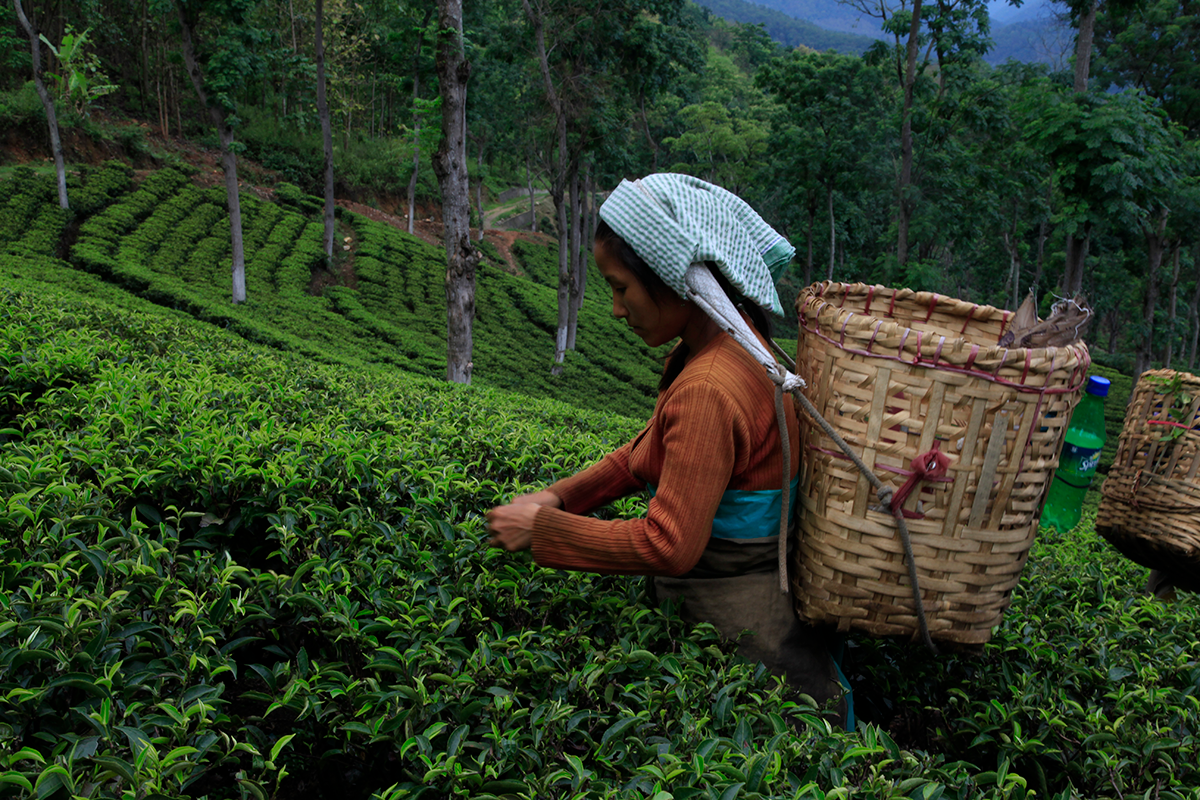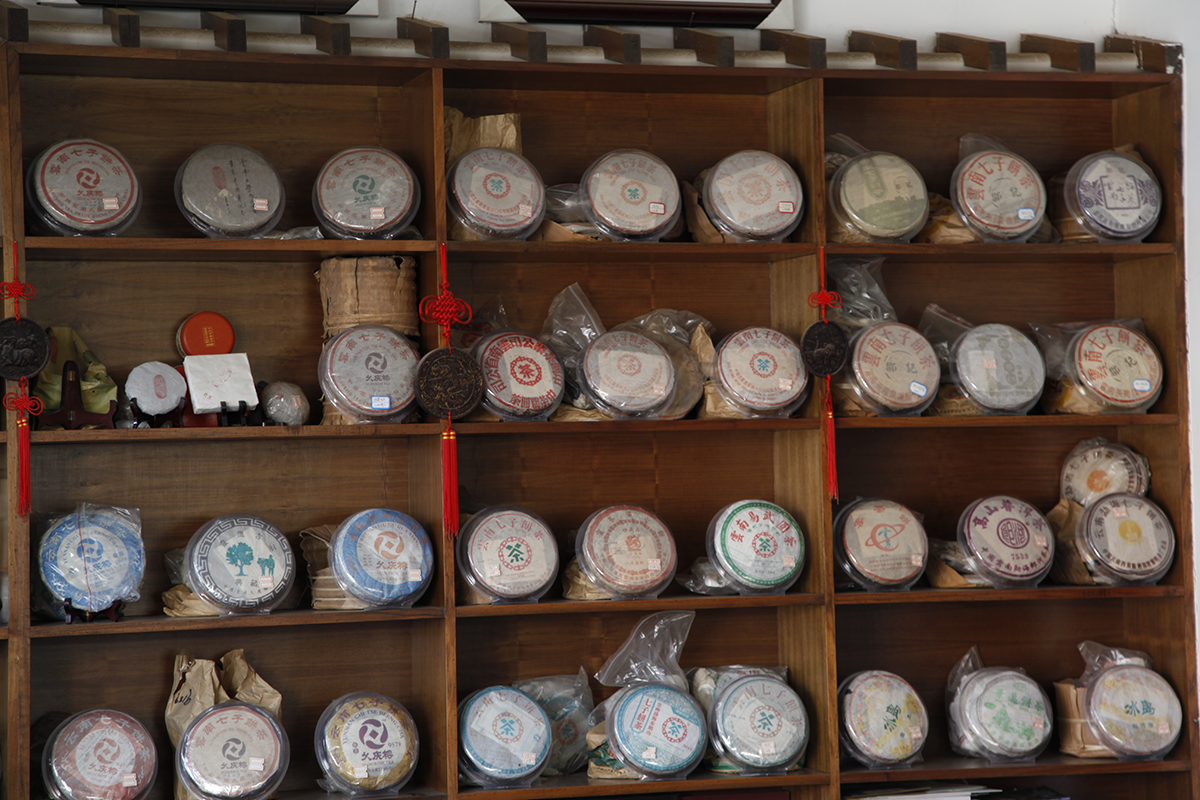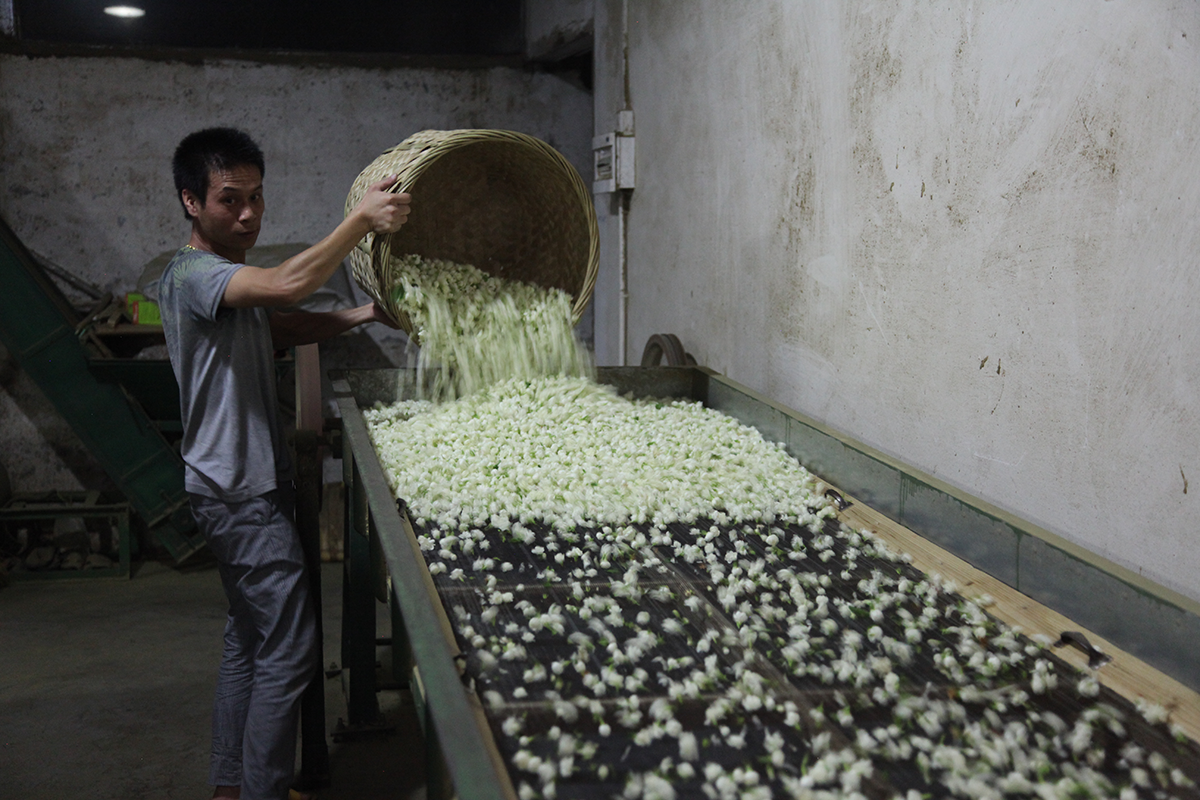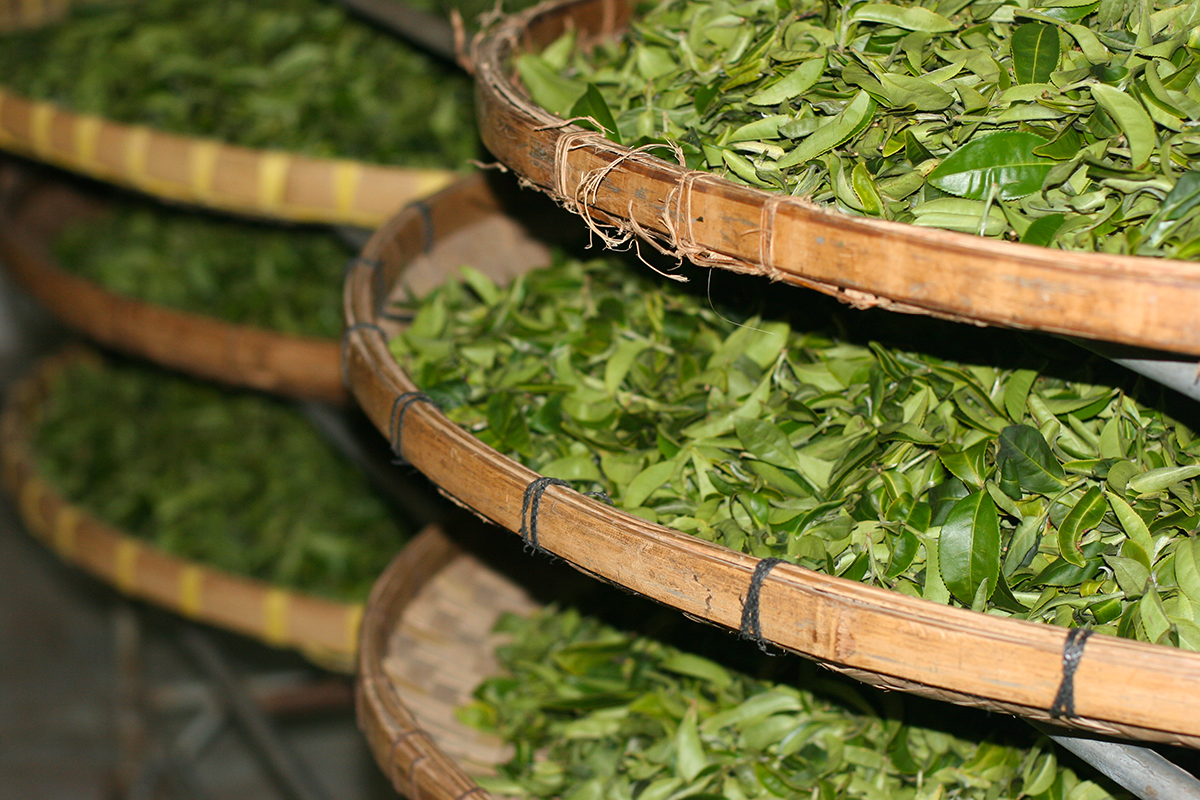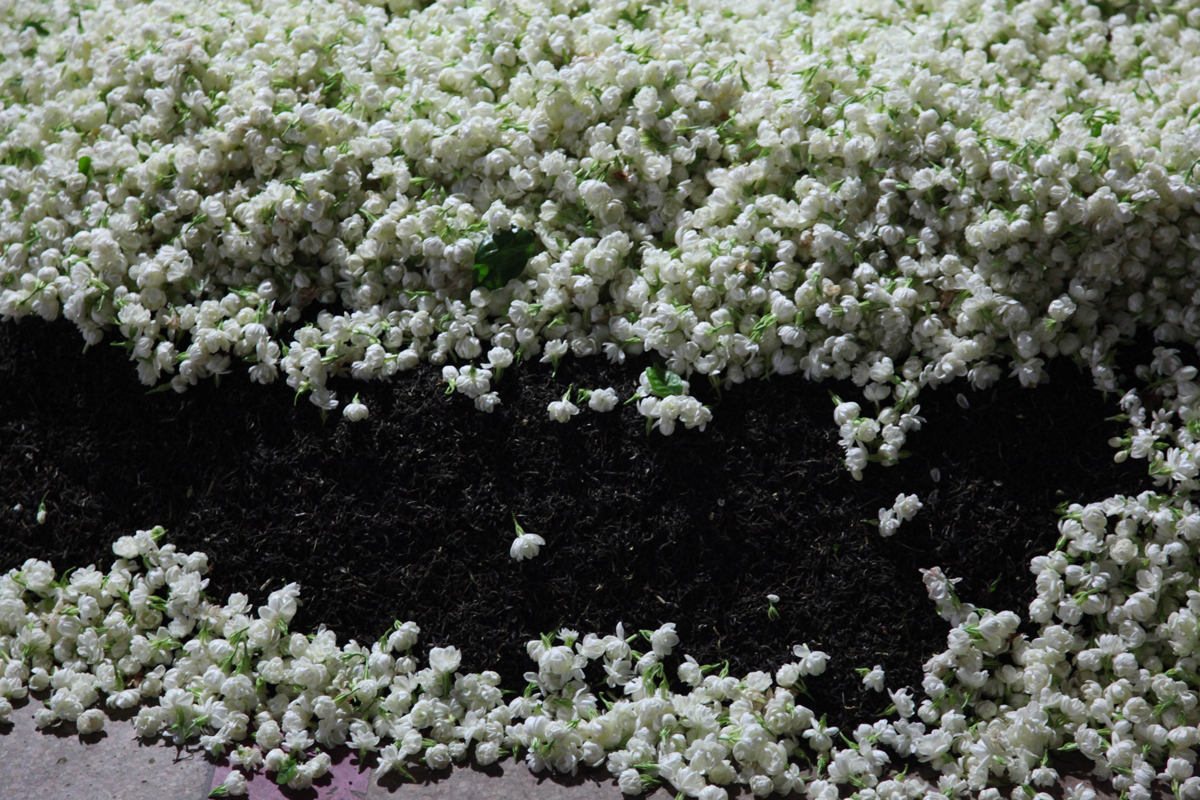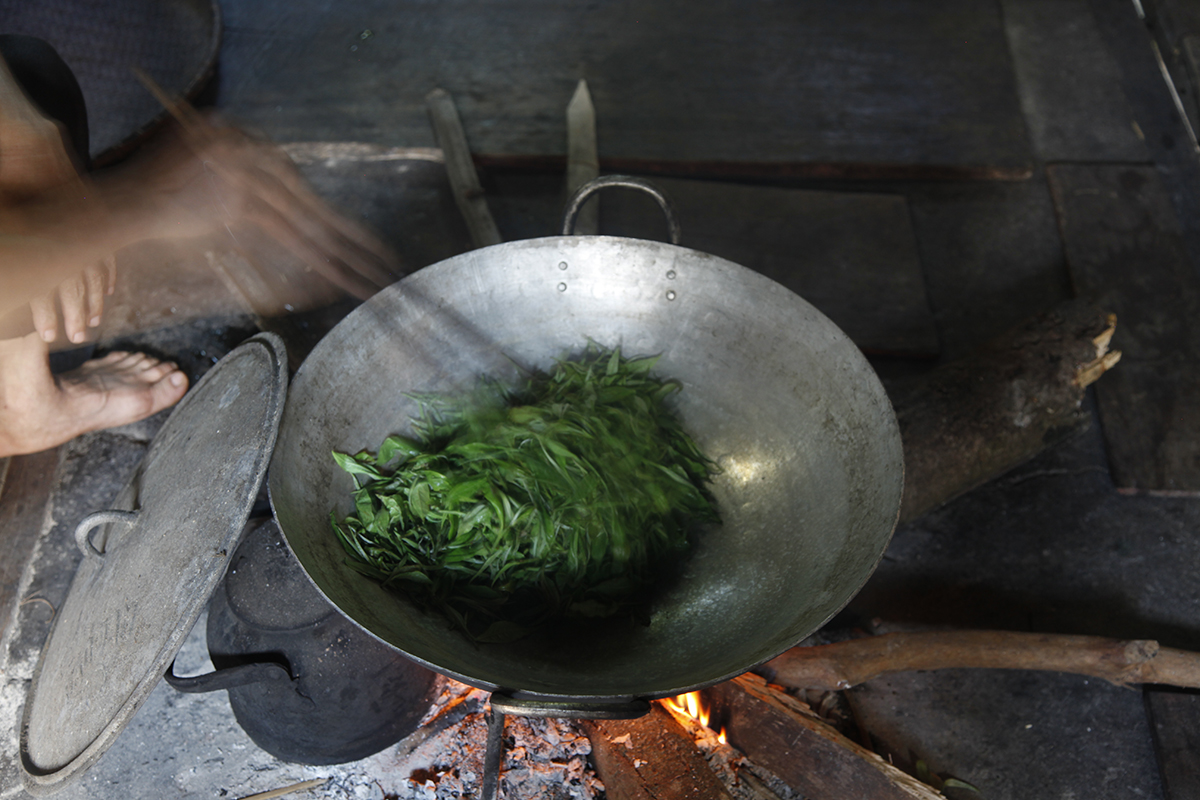The harvests will begin soon in Darjeeling. Happily, the tea is still picked by hand. The low-altitude plots are harvested first, for a simple reason: the tea plants have benefited from higher temperatures, meaning the terminal bud has grown faster. We can see that this photo was taken at the bottom of the valley, due to the gentleness of the slope and the density of the covering that protects the bushes from excess sunlight.
Tea processing
The dark tea season
The winter in general and especially the festive season is an ideal opportunity to explore dark teas, which have been fermented. The best known come from Yunnan and are called Pu Erh. They are sold in loose-leaf form or compressed into cakes (see photo). Dark teas undergo a slow ageing process (sheng) or an accelerated one (shu). They are prepared in a teapot or a gaiwan (gong fu method). Pu Erhs give off powerful aromatic notes of wood, undergrowth, spices, damp earth and animal aromas. And if I add that these dark teas are popular in China to help ease the effects of overeating, you’ll understand why this is a good time of year to discover them!
Varying qualities of jasmine tea
In China, the best jasmine teas come from the Fujian region (photo). They are made using the finest green teas in the province, harvested in April. The jasmine flowers are picked between July and early September. But if we go by volume rather than quality, the biggest producing region is Guangxi. There, they use green tea of a lower quality, while their jasmine flowers from early May to the end of September, hence the high volume, which is double or triple that of Fujian.
Rare smoked teas
Smoked tea, or Lapsang Souchong, is a speciality of Fujian. It is not very popular with Chinese people, and so it is exported. European food safety regulations were tightened a few years ago, and it is now very difficult to find a smoked tea that meets those standards. This is not due to specific pesticides, but because of a molecule called anthraquinone that forms naturally during the smoking process. For several years I’ve been encouraging a number of farmers to modify their smoking technique so that their tea can be approved. This is a slow, ongoing process, but there have been some positive results.
A wet shirt
Lotus tea is a Vietnamese tradition. To grow the flowers, you have to get wet. You get wet when it’s time to harvest the flowers. You get wet in the pond, either wading through the chest-height water or in the little leaky boats. And you get wet when it’s time to divide up Nelumbo nucifera by plunging your hand down towards the bottom and grabbing a few rhizomes, which will be planted out in another pond.
Lotus tea: a Vietnamese tradition
The lotus flower plays a very important role in Vietnamese culture. So it’s not surprising that the country has a tradition of flavouring tea with the flower, resulting in a particularly sought-after beverage. Production takes place in June and July and requires patience, as the tea leaves are left in contact with the flower pollen for five days in a row.
Chinese machines launched the Nepalese revival
Nepal has been producing tea for nearly two centuries. Originally, the culture and organisation of its plantations were based on the model that existed in Darjeeling. But since then, things have evolved considerably. Just over 10 years ago, a number of enthusiastic tea producers wanted to see how things were being done elsewhere, and brought back from Taiwan and China various small-capacity machines that offer a different and much more artisanal solution for processing tea. Today, these machines are widely used in most of the country’s tea co-operatives. Thanks to their introduction and the dedication of the people who use them, we can now enjoy all sorts of teas from Nepal: white, semi-oxidised, shaped into balls… And from a tasting perspective, they are of a remarkable quality.
This revival of Nepalese tea that we’ve seen in the last decade stems from a break with the old British system.
Time to sweat
Black teas are oxidised; green teas aren’t: that’s the difference. With oolongs, it’s more complicated. They can be oxidised a little, a lot, or zealously. Their oxidation rate can range from 10% to 70%. Of course, a lightly oxidised oolong will have a more vegetal aroma, while a more oxidised oolong will develop woody, fruity notes. Whatever the level of oxidation required, the processing steps are the same: withering, sweating, roasting, rolling, then drying. The sweating stage is essential. It involves alternating periods of stirring the leaves with periods of resting them, as illustrated by this photo. The aim of this stage is to encourage oxidation while removing the natural moisture from the leaves.
The art of making jasmine tea
The world’s finest jasmine teas are produced in August and September in Fujian province (China). They are made using a green tea base, and as the best green teas are harvested in April, the necessary quantity is reserved at the time. The jasmine flowers on the other hand, are picked at the end of summer. Jasmine flowers open in the evening, when they release their fragrance. When this happens, they are placed in layers with the tea leaves, impregnating them with their heady scent. Throughout the night they are mixed together to ensure the leaves have absorbed as much of the fragrance as possible. When day breaks they are separated, before the jasmine flowers turn bitter.
A very simple tea
Many types of tea are produced using a specific method or cultivar, or on a defined terroir. While most of these teas are made on modestly sized smallholdings, they are sometimes processed on larger premises with bigger facilities, and even in factories that make tea on an industrial scale. The key difference with teas processed traditionally as opposed to industrially manufactured teas is the artisanal quality of the former; this involves skilled work done by hand, and the process is judged through the feel, appearance and smell of the leaves at every stage.

